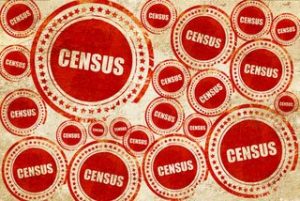 We certainly don’t need convincing that Canada is a great country. Here at Real Estate Leads, we’ve met all sorts of like-minded people in our aim to introduce realtors to ways to get more real estate leads as an agent and it seems the consensus is unanimous.
We certainly don’t need convincing that Canada is a great country. Here at Real Estate Leads, we’ve met all sorts of like-minded people in our aim to introduce realtors to ways to get more real estate leads as an agent and it seems the consensus is unanimous.
What makes Canada so appealing to those of us from families who’ve been here for generations is what makes it appealing to newcomers too. Many of us had great-grandparents who came to Canada from the British Isles hundreds of years ago with the same idea of a new and better life.
Back then you could get a large parcel of land for what wouldn’t even be half your down payment on a home these days, and the word ‘condo’ didn’t even exist. With the fact home ownership can be dauntingly expensive, it’s ideal that the New to Canada Program for Immigrants has been introduced to make home ownership a possible reality for people who have recently immigrated to Canada and are bringing their professional expertise and career prospects with them.
This versatile program makes it possible for qualified homebuyers new to Canada within the last 5 years to purchase a home with a down payment of as little as 5%. You can purchase a home, build equity, and become economically established in Canada sooner than ever before.
The property value must be less than $1,000,000, and loan security is available on first mortgages. Borrower qualifications include standard income and employment verification, plus 3 months minimum full-time employment in Canada, with borrowers being transferred under a corporate relocation program being exempt.
Only certain homes and home purchase quantities are allowed within the program. The maximum number of units an applicant can purchase is 2, and 1 unit must be owner occupied. Newly constructed home must be covered by a lender approved New Home Warranty Program, and existing resale properties must be readily marketable residential dwellings, located in markets with demonstrated ongoing re-sale demand. The estimated remaining economic life of the property should be a minimum of 25 years, as may be determined by a qualified provincially-appointed appraiser if deemed necessary.
Other lending stipulations for this program include:
- Applicants must have a 90.01-95% International credit report (Equifax or Transunion) score demonstrating a strong credit profile OR 2 alternative sources of credit demonstrating timely payments (no arrears) for the past 12 months
- Applicant must have immigrated or relocated to Canada within the last 60 months
- Must have a valid work permit or obtained landed immigrant status
- All debts held outside of the country must be included in the total debt servicing ratio (note: rental income earned outside of Canada is to be excluded from the GDS/TDS calculation)
- Guarantors are not permitted
- Foreign diplomats who do not pay tax in Canada are ineligible for this program
Qualifying terms and interest rates are as follows:
- Fixed, standard variable, capped variable and adjustable rate mortgages are permitted
- Maximum interest rate term of 25 years
- The qualifying interest rate is the greater of the contract rate or 5-year benchmark rate
and purchase transactions may be made up to a 95% LTV (loan to value) limit, with – as mentioned – a 5% down payment on properties up to 500,000 in value, and a 5% down payment on $500,000, with an additional 10% down payment on the portion of the home value above $500,000 if purchased for any price between 500k and 1 million.
We hope this programs is helpful for valuable newcomers coming to Canada to make our country a better place to live, as has been the case for well more than 200 years now. And we also hope it makes for more clients for our realtor readership. Check Real Estate Leads Availability here and receive qualified online-generated leads provided to you exclusively for your exclusive region every month, and ask away with any questions too.

































